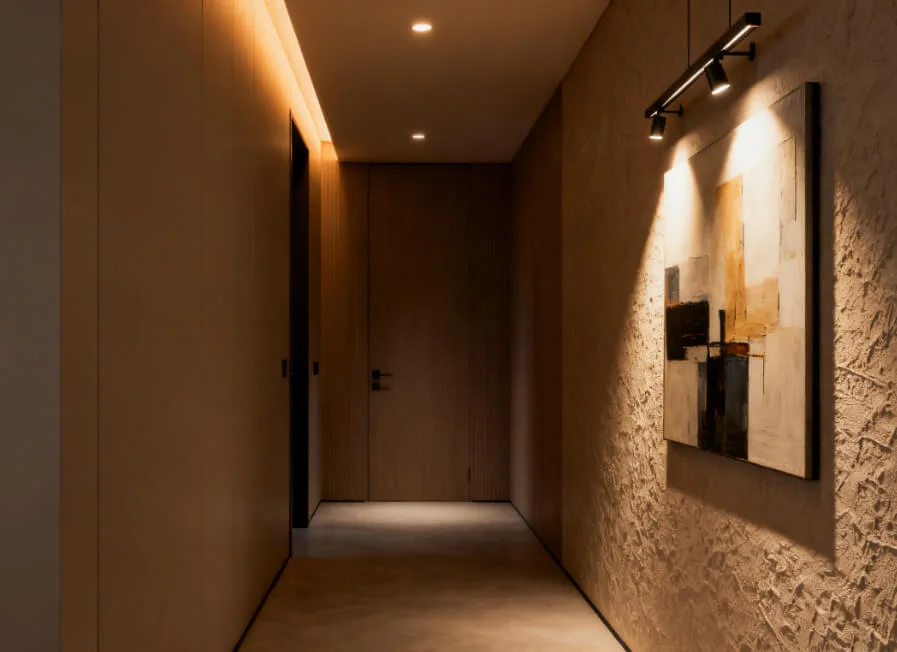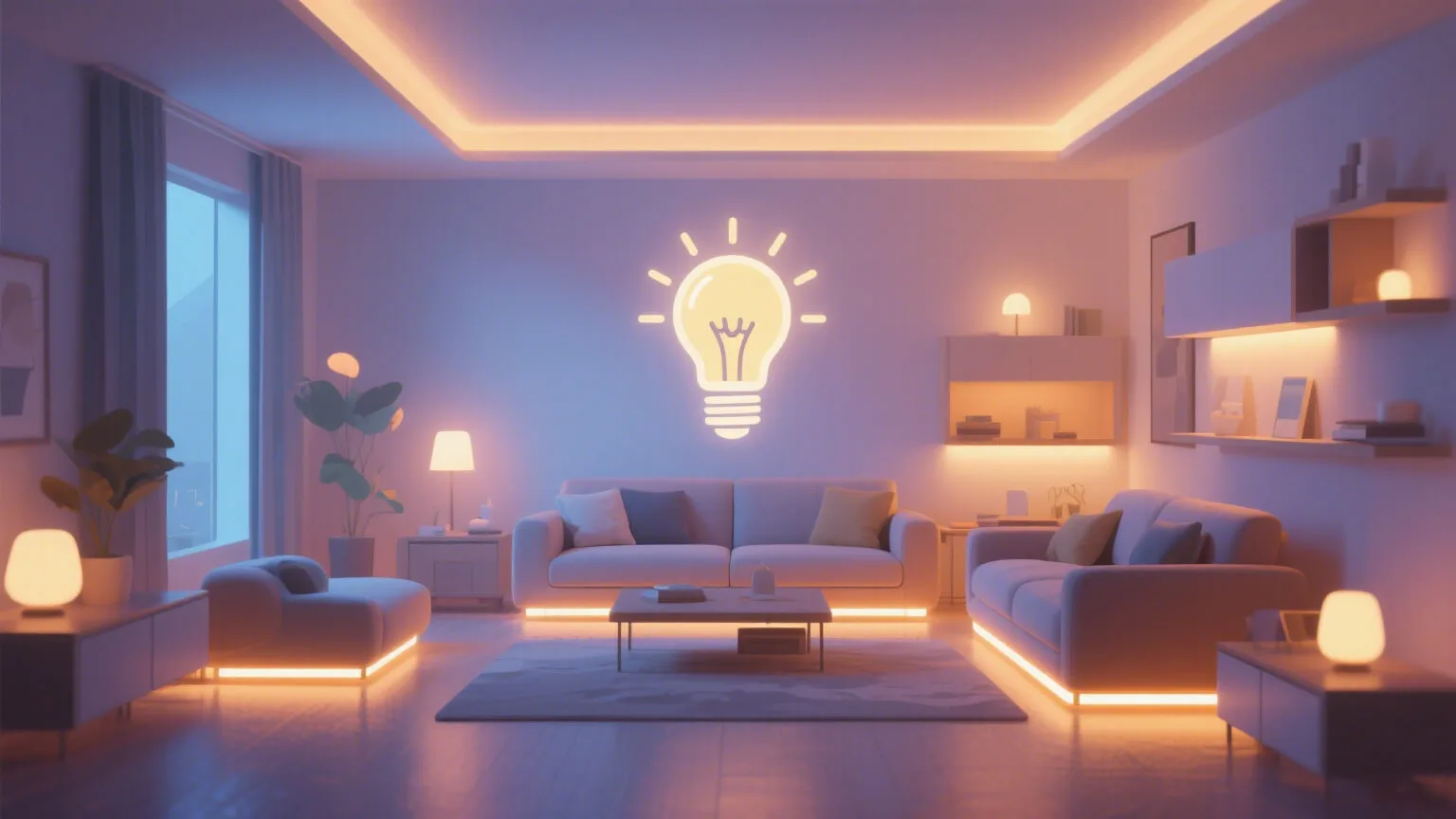Understanding the Impact of Lighting on Productivity
Office lighting plays a crucial role in influencing the productivity and well-being of employees. Various studies have highlighted that the type and quality of lighting can significantly affect mood, focus, and energy levels. One central aspect to consider is the dichotomy between natural and artificial light. Natural light, which mimics the daylight spectrum, has been shown to improve employee mood and energy, ultimately leading to enhanced productivity. In contrast, artificial lighting, particularly if not designed thoughtfully, can contribute to fatigue and reduced concentration.
The physiological effects of light exposure are well-documented. For instance, exposure to natural light increases serotonin levels, promoting feelings of happiness and focus. Conversely, harsh artificial lighting, such as that from fluorescent bulbs, can lead to discomfort and increased eye strain. This discomfort not only detracts from concentration but can also diminish overall work output. A study conducted by the Heschong Mahone Group found that office spaces bathed in natural light can result in 15% higher productivity compared to those that rely solely on artificial sources.
Moreover, the integration of different elements, such as pendant lighting and linear light fixtures, can create a layered lighting effect that further enhances the workspace. Pendant lighting can provide direct illumination for tasks that require focus, while linear light can create a more ambient environment conducive to collaboration and communication. Understanding the nuances of office lighting, including the psychological impacts of different lighting styles, empowers office managers to create settings that foster productivity. By intentionally selecting lighting configurations, managers can enhance both employee well-being and operational efficiency.
In conclusion, the strategic implementation of lighting in office environments is essential for optimizing productivity and enhancing employee satisfaction. Utilizing a thoughtful blend of natural and artificial light, along with appropriate fixtures such as pendant lighting and linear light, can yield significant benefits for any organization.
Types of Office Lighting: Pros and Cons
Effective office lighting plays a pivotal role in enhancing productivity and well-being. There are three primary types of office lighting, namely ambient, task, and accent lighting, each possessing unique characteristics, advantages, and disadvantages.
Ambient lighting serves as the primary source of illumination in an office environment. This type of lighting provides overall brightness, ensuring that the entire space is adequately lit. Natural light can be an excellent source of ambient lighting, but when that is not feasible, options such as pendant lighting or overhead fixtures with diffused bulbs can be employed. The primary advantage of ambient lighting is its ability to create a well-lit atmosphere that supports general activities; however, excessive reliance on this type might lead to an uninspiring or monotonous workspace.
Task lighting, on the other hand, is specifically designed to illuminate particular areas or surfaces where detailed work takes place. Desk lamps and adjustable linear lights are prime examples of task lighting. The primary benefit of task lighting is its capability to focus light where it is needed most, reducing eye strain during intricate tasks. However, poorly placed task lighting can create shadows or glares, leading to discomfort and decreased productivity.
Accent lighting is used to highlight specific features or areas within an office, such as artwork or architectural elements. While accent lighting can add visual interest and contribute to a stimulating work environment, it should not be the primary lighting source as it lacks the brightness necessary for comprehensive space illumination.
Combining these various lighting types can result in a balanced and effective lighting strategy. For instance, pairing ambient lighting with task and accent lighting can create a dynamic atmosphere that supports different activities and enhances employee mood and productivity. By understanding the advantages and drawbacks of each type of lighting, businesses can tailor their choices to foster an ideal work environment.
The Role of Color Temperature and Brightness
The role of color temperature and brightness in office lighting is significant as it directly influences employee productivity and overall well-being. Color temperature, measured in Kelvin (K), determines whether a light source appears warm or cool. Warmer temperatures, typically ranging from 2700K to 3000K, generate a cozy and inviting atmosphere, suitable for collaborative spaces and break areas. Conversely, cooler temperatures, ranging from 4000K to 6500K, promote alertness and focus, making them ideal for areas where concentration is paramount, such as individual workstations and meeting rooms.
Brightness, quantified in lumens, also plays a pivotal role. High brightness levels can enhance visibility and reduce eye strain, facilitating task performance. However, the ideal lumens depend on the activities being conducted. For detailed tasks like reading or paperwork, a brightness level of approximately 300 to 500 lumens is advisable. On the other hand, common areas benefit from softer, lower brightness levels for a more relaxed experience. Integrating various light sources, including pendant lighting and linear light fixtures, can help create layered lighting designs that balance brightness and warmth effectively.
When selecting the appropriate color temperature and brightness levels, it is crucial to consider the layout and function of each office space. Using a combination of natural light and artificial lighting, like pendant lighting, can offer flexibility and adaptability throughout the workday. By adjusting the color temperature and brightness according to specific tasks—dimming lights for creative work or enhancing brightness during collaborative sessions—employers can create an environment conducive to productivity and employee happiness, ultimately contributing to better job performance.
Strategies for Optimizing Office Lighting
Effective office lighting is integral to enhancing employee productivity and well-being. One primary strategy for optimizing office lighting is positioning workspaces to maximize natural light exposure. When planning the layout, consider placing desks near windows and utilizing spaces that receive abundant daylight. This natural lighting not only reduces reliance on artificial lighting but also creates a more inviting atmosphere that can elevate mood and increase focus.
In conjunction with natural light, integrating adjustable lighting solutions is essential. Options such as pendant lighting and linear light fixtures provide flexibility to adapt to various tasks and preferences. Adjustable fixtures allow employees to control the intensity and direction of light according to their needs. For instance, a task requiring concentration may benefit from brighter, focused lighting, while relaxed meetings could be enhanced by softer ambient lighting. This adaptability promotes a more dynamic and responsive work environment.
Furthermore, the incorporation of smart technology can greatly enhance energy efficiency within office lighting systems. Smart lighting solutions enable automatic adjustments based on occupancy and daylight availability, significantly reducing energy consumption. These technologies often come equipped with sensors and timers that optimize lighting levels throughout the day, ensuring that spaces are well-lit when needed and conserving energy during off-hours.
Lastly, seeking employee feedback on lighting preferences is vital to creating an inclusive and productive work environment. Understanding individual comfort levels with various lighting types empowers organizations to tailor their solutions effectively. Regularly soliciting input can guide adjustments to lighting plans, ultimately fostering an atmosphere that supports both the physical and mental well-being of employees. Implementing these strategies not only aligns with modern workplace design principles but also underpins the essential connection between lighting and productivity.



